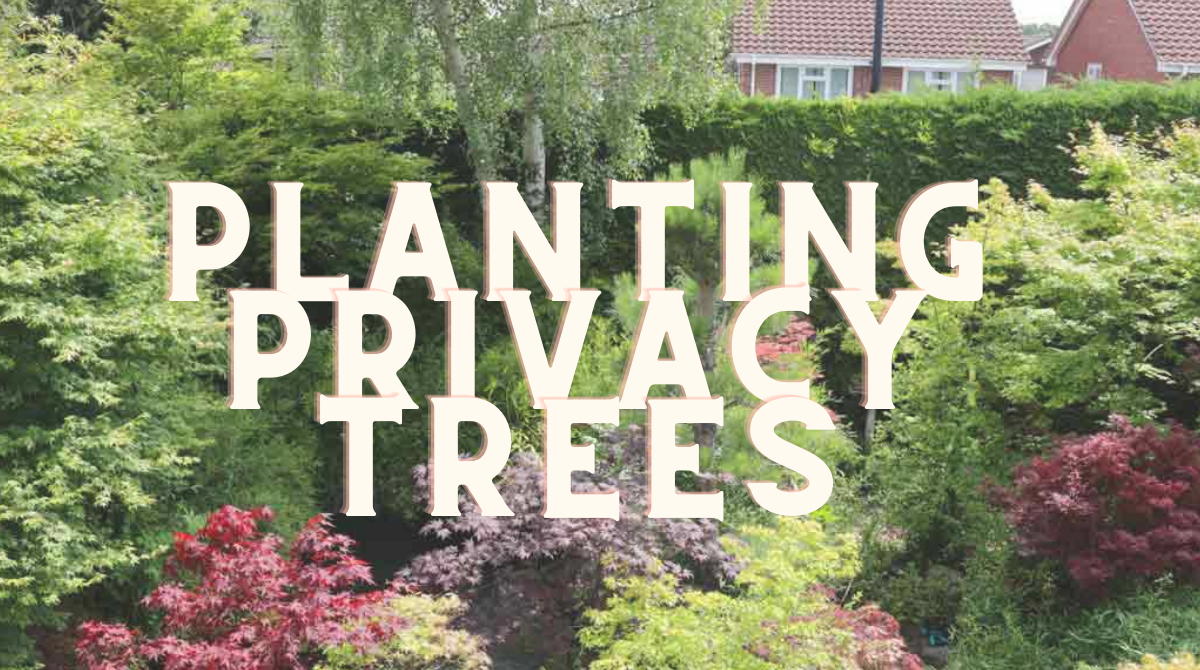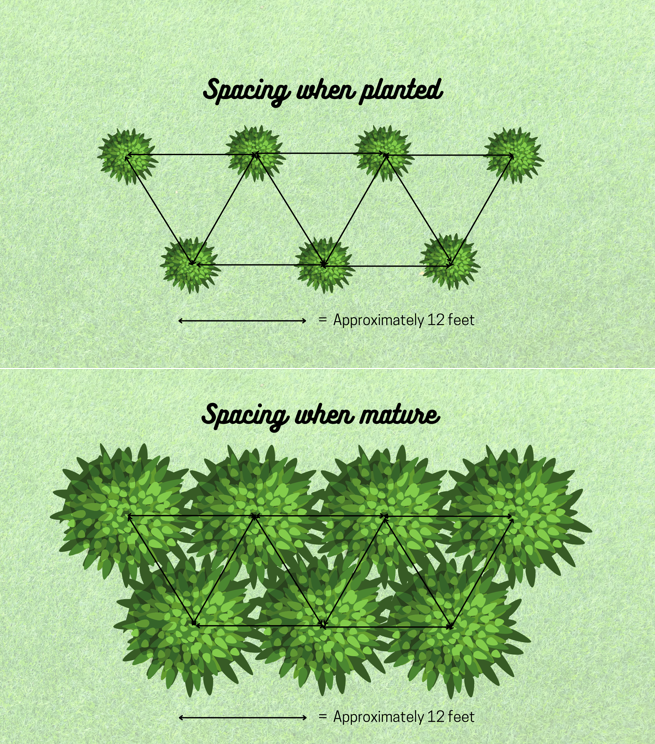Planting Privacy Trees

By: Kate Bolkin
We all know that trees invite many lovely qualities to our outdoor spaces, like gorgeous colors, cleaner air and water, and calming energy. But did you know that trees can also block out unwanted qualities that may be disturbing your outdoor oasis? Planting screen trees (such as junipers, arborvitae, cedars, hollies, magnolias, and more) can help stop your nosy neighbor from looking into your backyard, muffle the noise of traffic, act as a wind break, and filter out street pollution. Here are some things to keep in mind when planting your own privacy screen.

Know the mature size:
Before choosing what trees you want, take time to look up how big they will get at maturity. A green giant arborvitae and an inspiration magnolia may both be 5 feet tall at the nursery, but one can grow up to 60 feet, while the other only reaches about 10 feet. Knowing this information is critical if you have overhead utilities or nearby structures that the tree can run into. Knowing a tree’s mature width is also extremely important for proper spacing.
Proper spacing is key:
One of the most common mistakes people make when planting trees for privacy is planting them too close together. Planting screen trees close together may initially make sense, but this can result in lanky, sparse branching, rather than the lush, full branching you want for privacy. A general tip is to plant screening trees 10-12 feet apart from center. To create even more screening in a space, you can create two or more rows of staggered trees (see Image). Although it may feel that these trees are planted too far apart at first, you will be thankful for this spacing later. You can also plant in “clumps” of 3 or 5 different trees to give your backyard screen a more “natural” feel.
Diversity can be a lifesaver:
Creating a privacy screen with a variety of tree species will give your space more dimension, color, and uniqueness. Not only does tree diversity have aesthetic value, but it can also save your landscaping! Planting only one species is risky because if a pest or disease targets that species, you could lose the vast majority of your trees. If you diversify the trees you plant, that same pest may take out a few of its host species trees, but your overall landscaping will be spared.
For example, a pest that is common amongst screen trees is the bagworm— a caterpillar that easily spreads from one evergreen to the next, eating the foliage. So, it might be a good idea to include some multi-stem or shrub-like deciduous trees within your screen to reduce the chances of bagworm spread and give your landscaping a multidimensional look.




